The ROI (return on investment) of SEO is important for any business owner to understand. It could be even more so for in-house and agency marketers.
You can’t implement your important work if you can’t prove it’s a worthwhile investment.
Below, we'll show you how to measure the ROI of SEO. Step by step.
What Is the ROI of SEO?
The ROI of SEO measures how much revenue SEO activities generate for a business compared to their cost. It’s one of the most important concerns for any SEO consultant or manager. (Or anyone who does SEO, really.)
It helps tie your efforts to business goals.
You’ll have a positive return on investment if the revenue generated by your SEO strategy is higher than its cost.
SEO isn’t a quick fix, though. And measuring your SEO ROI is complex because it takes time to see significant SEO results.
But it’s still an important KPI (key performance indicator) to measure.
The Importance of Measuring SEO ROI
The average business drives 53% of its traffic through organic search. Plus, almost every purchase today involves organic search in some way or another.
So, it's important to understand the financial value that SEO drives for your business.
If you don't know how much money you earn for every dollar you invest in SEO, it's impossible to determine what’s working and what’s not.
And while you should track other SEO KPIs, the ultimate measure of profitability is positive ROI.
If you can prove a positive ROI, you’ll have a much easier time proving success and generating buy-in from stakeholders.
How to Measure the ROI of SEO
The SEO ROI formula is simple. Very similar to calculating the ROI for any other type of investment. Essentially, SEO profit divided by SEO costs.
Which means:
SEO ROI = (value of conversions - cost of investment) / cost of investment
Let’s dissect each.
1. Calculate Your SEO Investment
First, you need to calculate the cost of your total investment in SEO.
Add all the costs associated with the channel. Use this as your investment figure.
Typically, these costs can include:
In-House SEO Resources
These are employees who work on SEO 100% of the time.
Some roles, like copywriters or developers, may only work on SEO tasks some of the time. In this case, break down their cost to an hourly or daily rate.
Track their time spent on SEO tasks, and add it to your calculation.
Freelancers and Agencies
It’s simple to track SEO investment for outside SEO agencies and freelancers. Because most agency contracts are on a retainer model, usually with a fixed monthly fee.
Add agency fees (or freelancer rates) directly to your investment calculation.
Tools
If your team uses any SEO tool (like Semrush), take the monthly cost and add it to your calculation. If there are tools that other departments share, consider partially including the cost.
Add up these costs. That’s your total cost of SEO investment.
Note: These costs might change every month—that's OK. Just account for any changes when measuring your ROI on SEO.
2. Track and Analyze Conversions
Next, track and measure the value of each conversion.
For this step, you’ll need Google Analytics (or a similar tool). It can help you quickly and easily measure your business’s revenue from organic search.
But the type of conversions you track and the value you assign them are different for every business.
For example, ecommerce stores can use tracking to pull sales data from their online transactions. And accurately measure their revenue.
But lead generation businesses have to set up goals (like form submissions) and assign them dollar values.
Here’s how to set up conversion tracking for ecommerce and lead-gen businesses.
Tracking Ecommerce Conversion Values
To start collecting ecommerce conversion data, add ecommerce events to your website in Google Tag Manager.
If you haven’t set it up yet, you can follow Google’s instructions.
Once you start tracking, you’ll see an ecommerce report with detailed information about your transactions.
In Google Analytics, go to “Reports” -> “Monetization” -> “Ecommerce purchases.”
Like so:
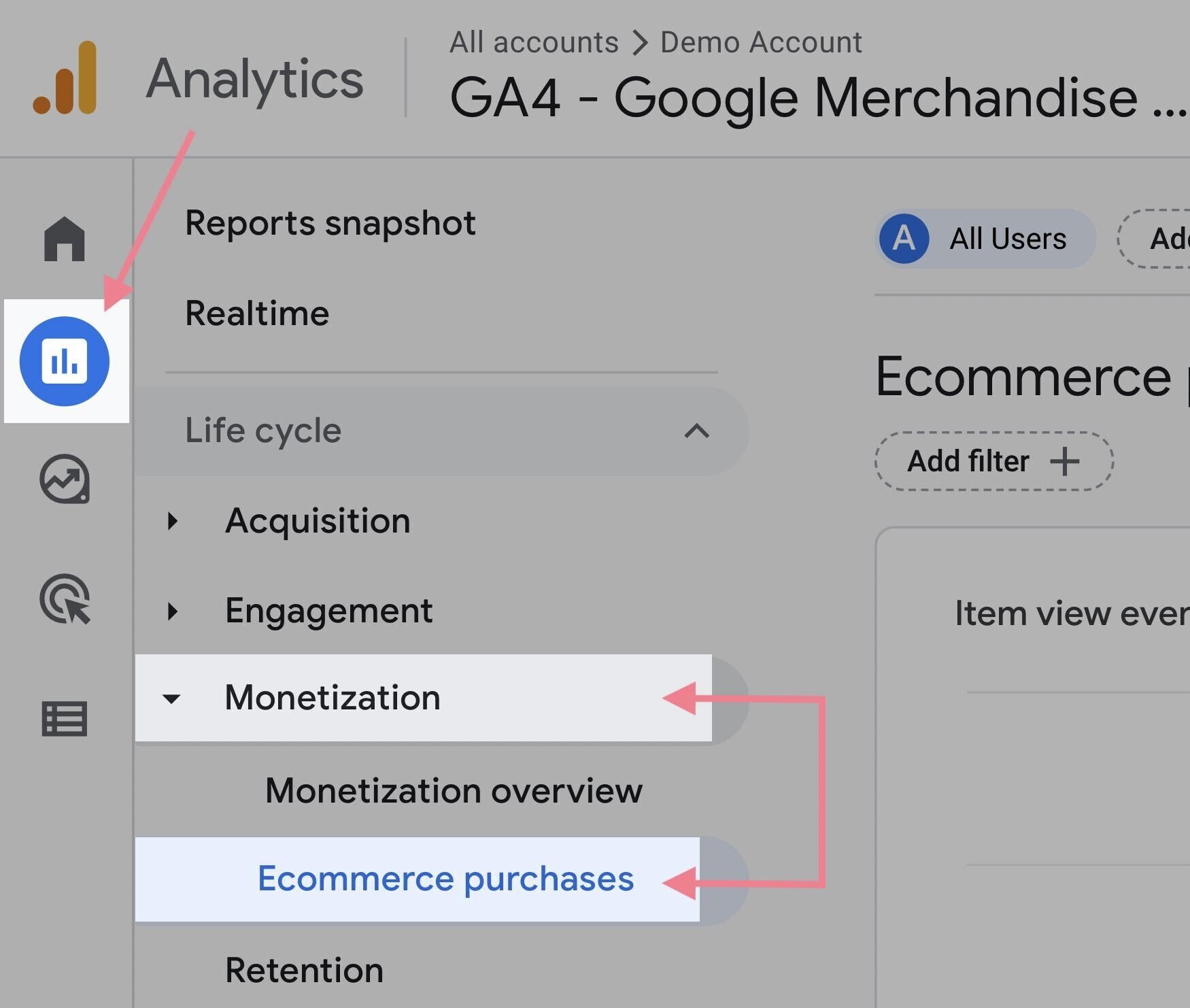
Then, filter to organic traffic.
Click “Add filter.” Then select Dimension: “Source Medium” and Dimension values: “Google / organic.”
And click “Apply.”
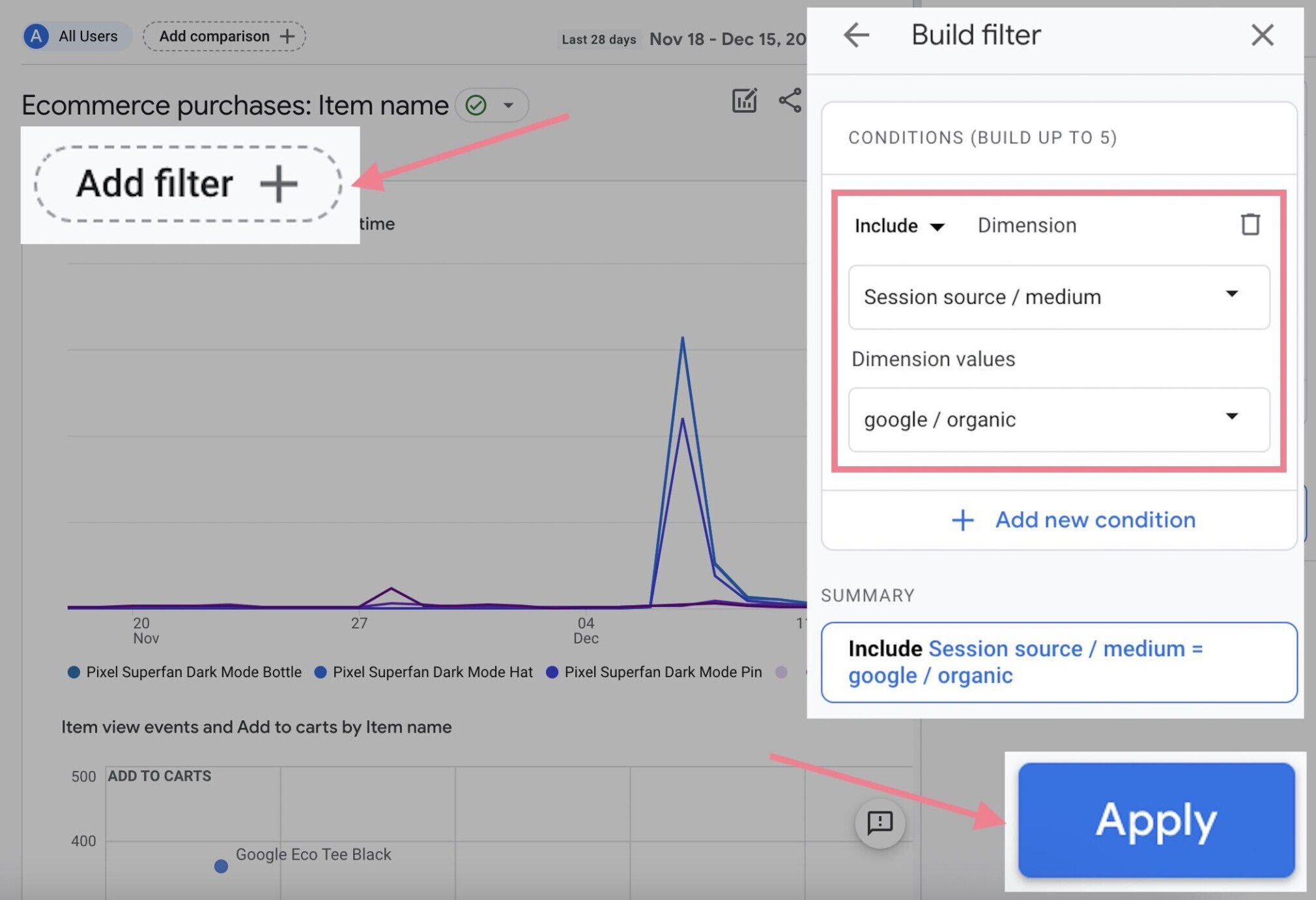
The detailed information is great. But we specifically want one number: the conversion value.
So, click on the “Insights” icon on the top right. The tool will display the total revenue for the selected time frame.
Like this:
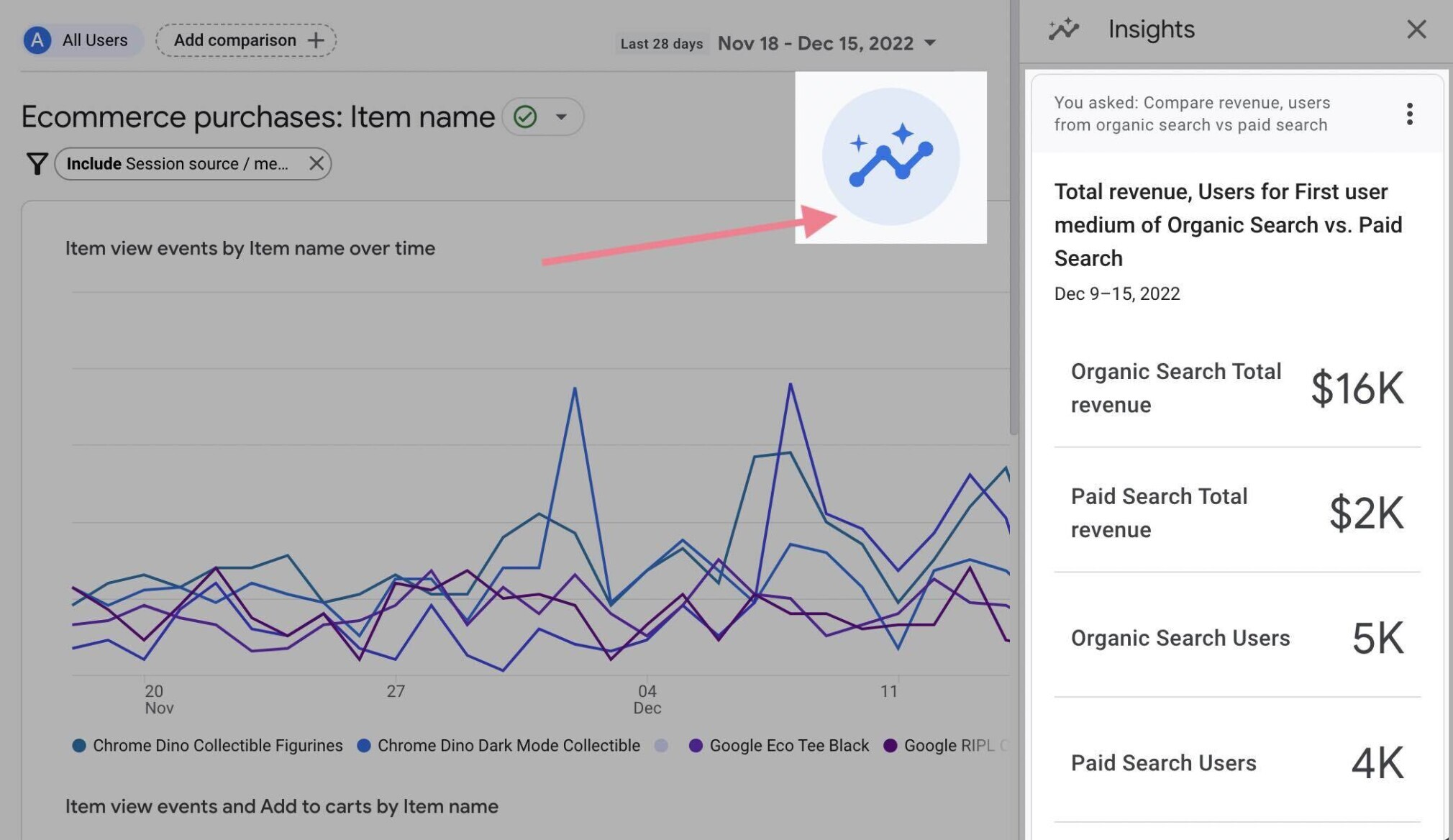
This is your total value of conversions.
Tracking Lead Generation Conversions Values
Tracking conversions can be more challenging if you don’t make sales on your site.
Unlike ecommerce transactions, a lead (or a conversion) doesn't have a specific associated value. Unless you assign one.
You can do this in Google Analytics.
Head to “Admin” -> “Events.”
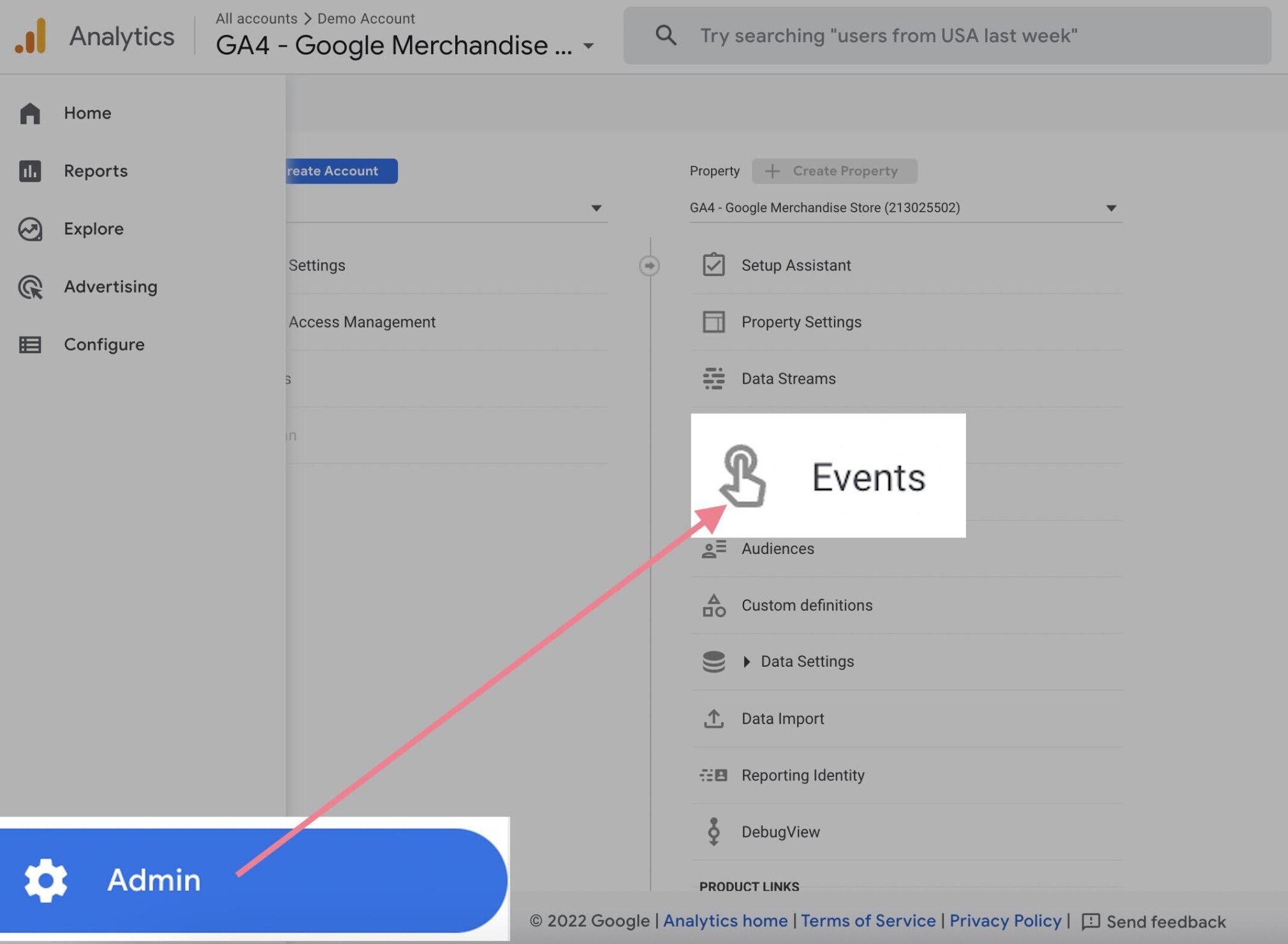
And click “Create event.”
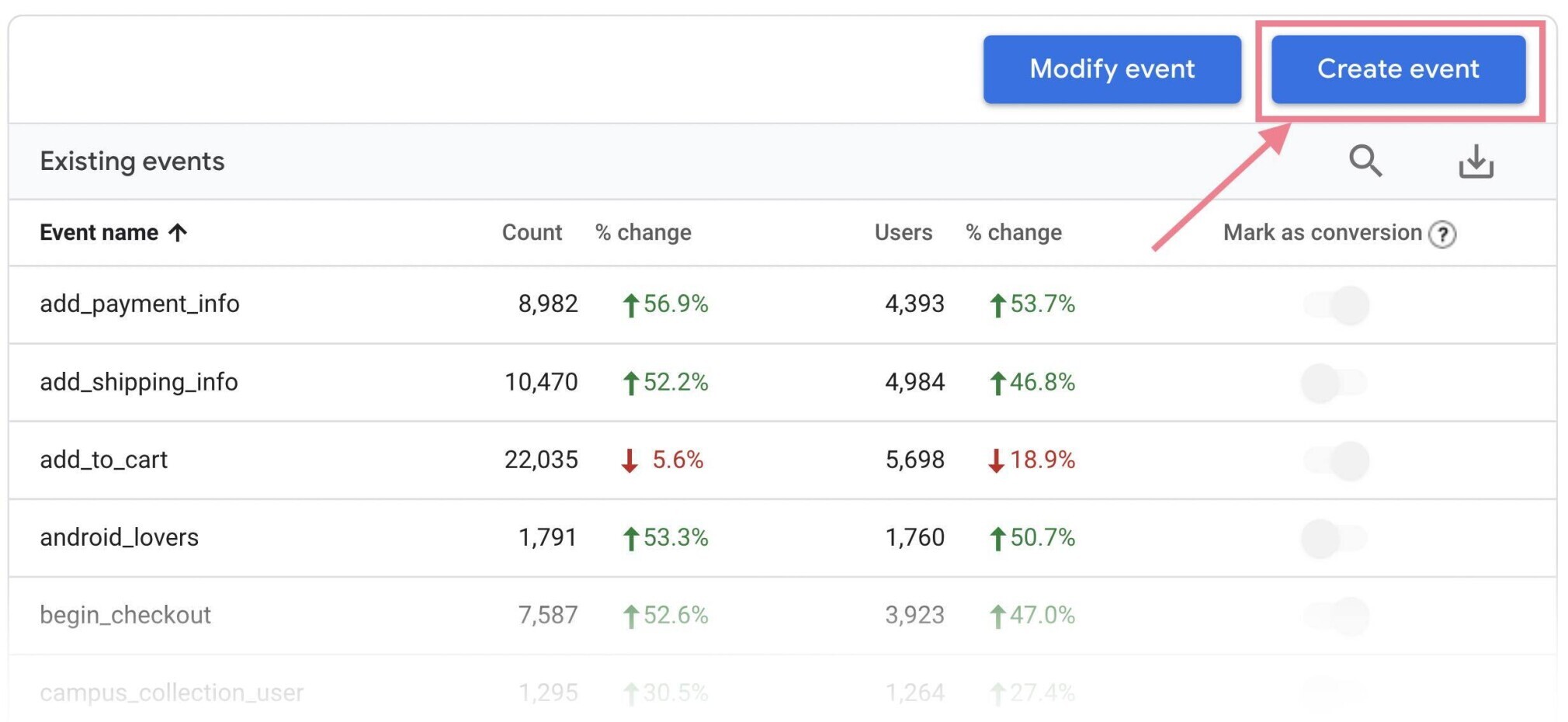
Then, create events for each of your conversions.
These can be any actions that contribute to your business’s success. Like form submissions, free trial signups, or visits to a certain page.
Let’s create an event for a form submission.
First, give your event a name. Then select your “Parameter,” “Operator,” and “Value.”
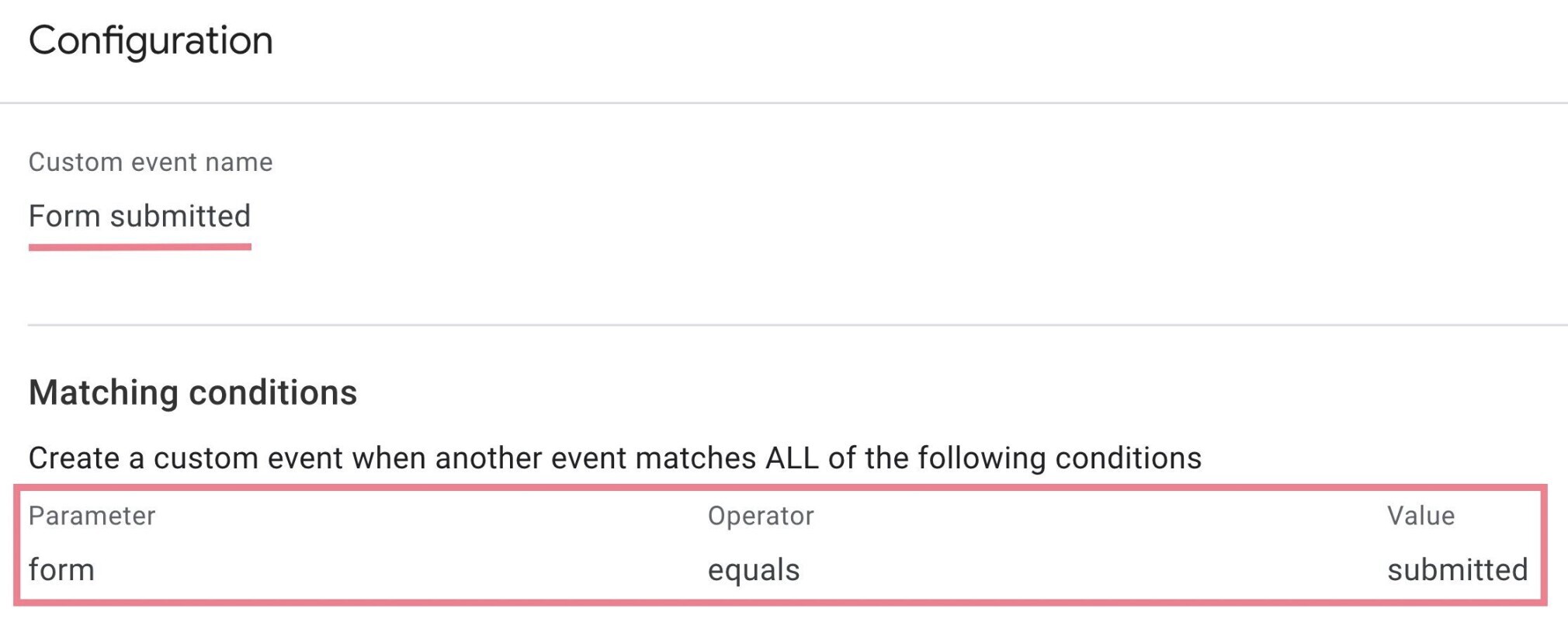
You should see your conversion under “Existing events.” Next, toggle the switch under “Mark as conversion.”
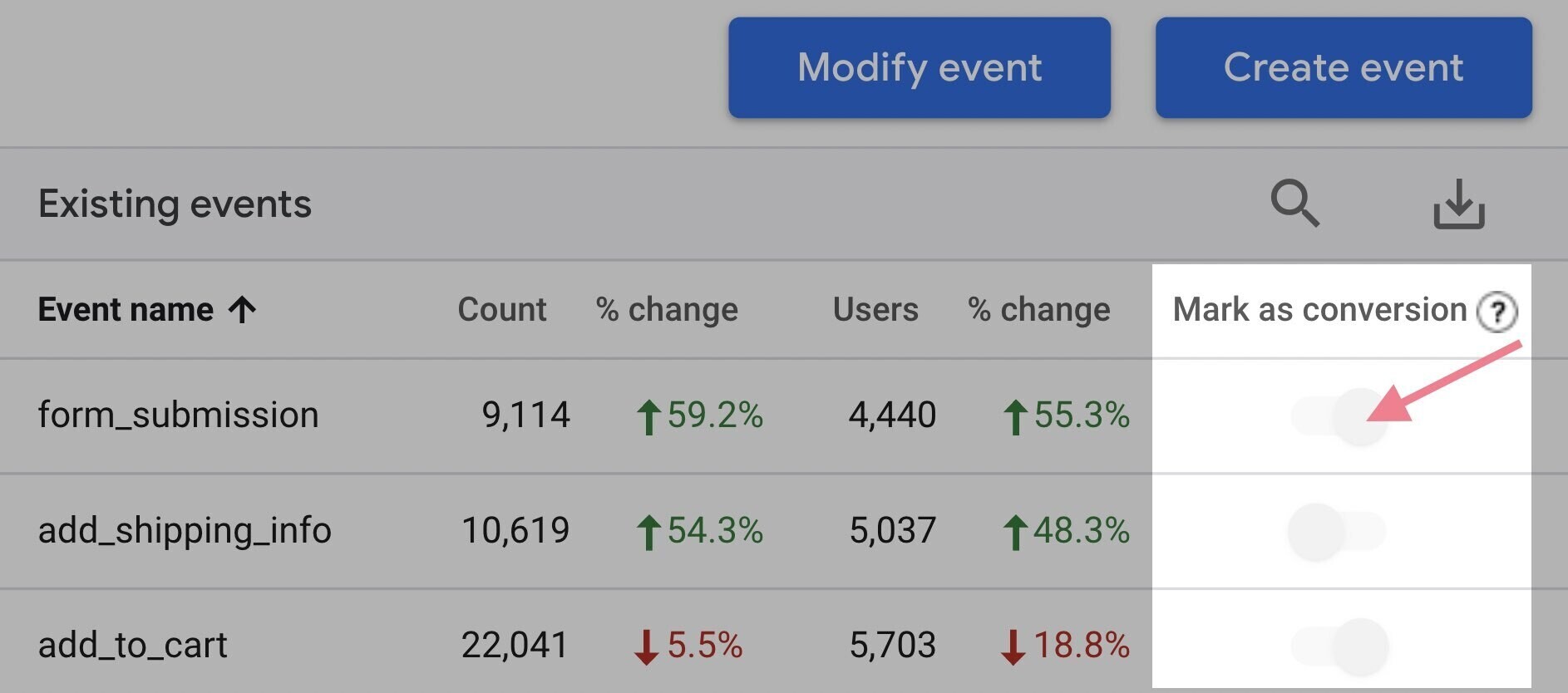
Now you’ll see your event as a conversion in the “Conversions” tab.
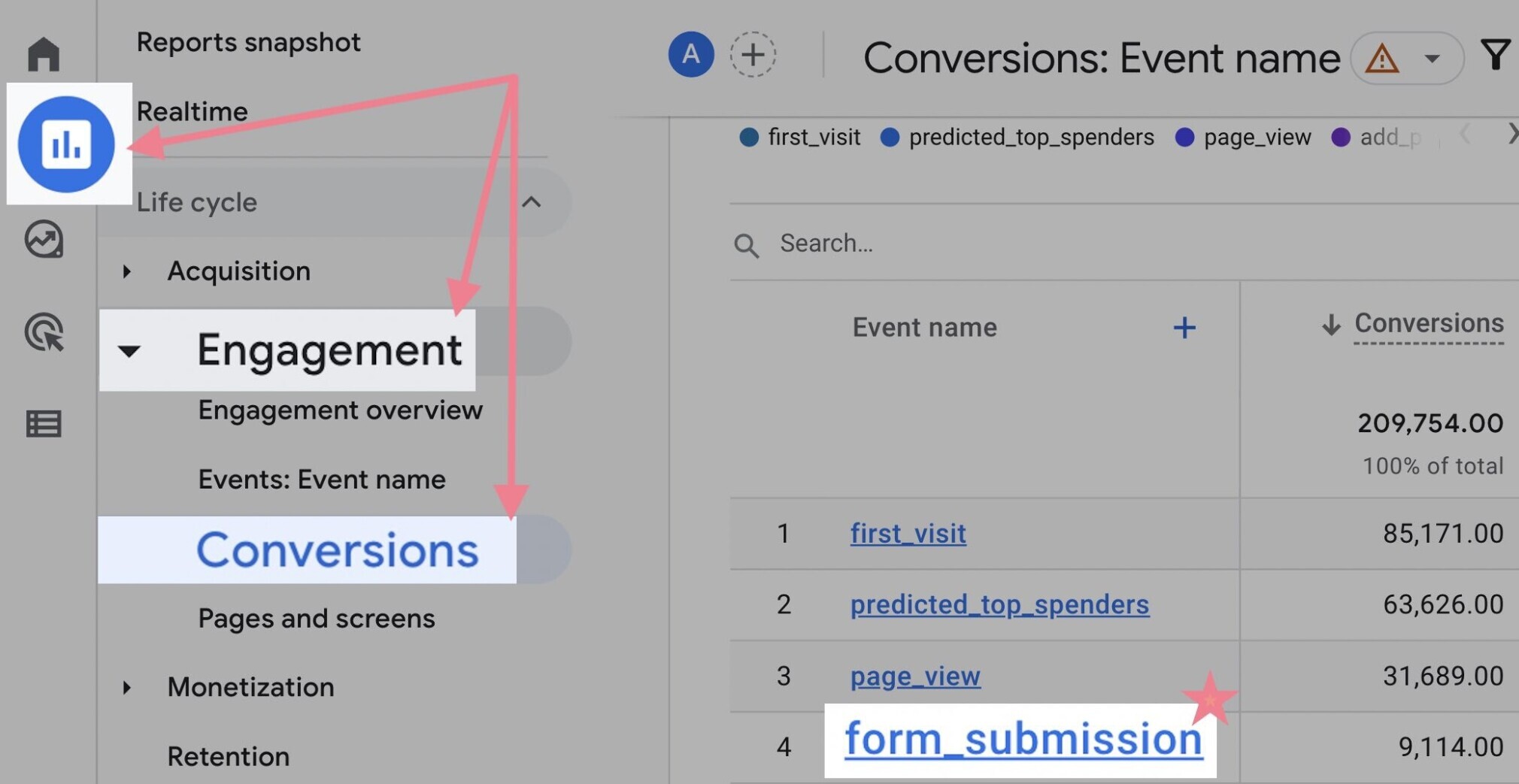
You still need to assign a monetary value to your conversion.
To do so, go to your event. In the “Parameter configuration” section, click “Add modification.”
And in the “Parameter” field, enter a currency type (e.g., EUR) and enter the value (e.g., “50” for 50 euros).
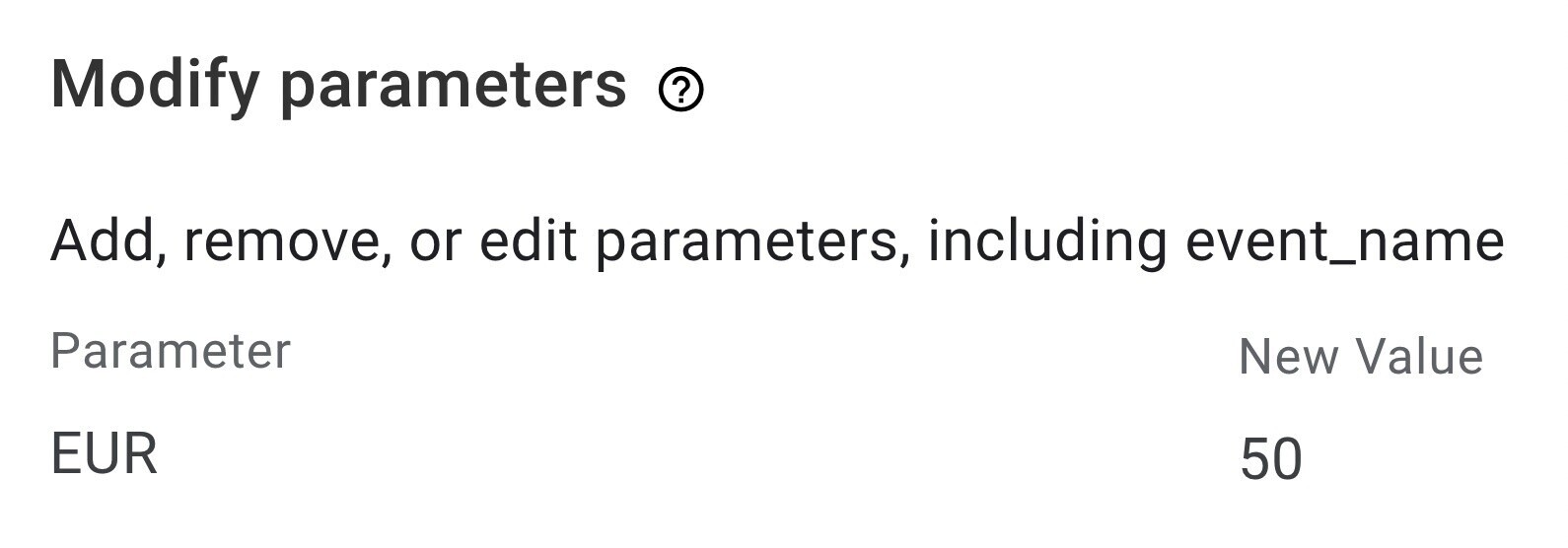
Click “Save,” and you’re done.
You can use this to help you to calculate the ROI of your SEO. Every time an event is triggered, a monetary value is assigned to it.
But how do you know how much value to assign to each event?
The simplest (and usually the most effective) way is by calculating:
Customer lifetime value (LTV) x lead conversion rate
Customer LTV is the total amount a customer is expected to spend with your business during the average lifetime of your relationship.
And lead conversion rate is the percentage of leads you generate that turn into sales.
Say the average lifetime value of a customer is $20,000 and your close rate is 15%. Your goal value should be set at $3,000.
Of course, this is making certain assumptions.
However, it's a way to calculate the return for a business where leads are the main source of conversions.
By this stage, you have the cost of investment in SEO and the value of your conversions.
You're ready to calculate your SEO campaign's ROI.
3. Calculate Your Return on Investment
Once you have the numbers you need, calculating your ROI from SEO is easy.
Use the same formula you saw before:
SEO ROI = (value of conversions - cost of investment) / cost of investment
Let’s assume that in one month, your SEO campaign generated $200,000. And the cost of investment was $40,000.
Plug these figures into your formula:
($200,000 - $40,000) / $40,000 = 4
Which means: for every $1 you spent on SEO, you saw a return of $4.
In other words, your ROI is 400% (4 x 100 to get a percentage).
That's all there is to it.
You can use this formula to calculate the ROI of your SEO campaign across any period you choose. So long as you know the costs and returns.
Forecast SEO ROI
Now that you know how to measure the ROI of SEO, you can start to think about forecasting.
Whether you work in-house or at an agency, you’ll likely have to project how much growth and revenue you expect to generate.
In any case, forecasting SEO ROI is important. It helps allocate resources, prioritize SEO efforts, and make adjustments.
To start, consider the following:
- Your website’s past SEO performance
- Your traffic potential
- Your average conversion rate
To see your site’s SEO performance, plug your URL into Semrush’s Domain Overview tool.
Head to the “Compare domains” tab and add your top four competitors.
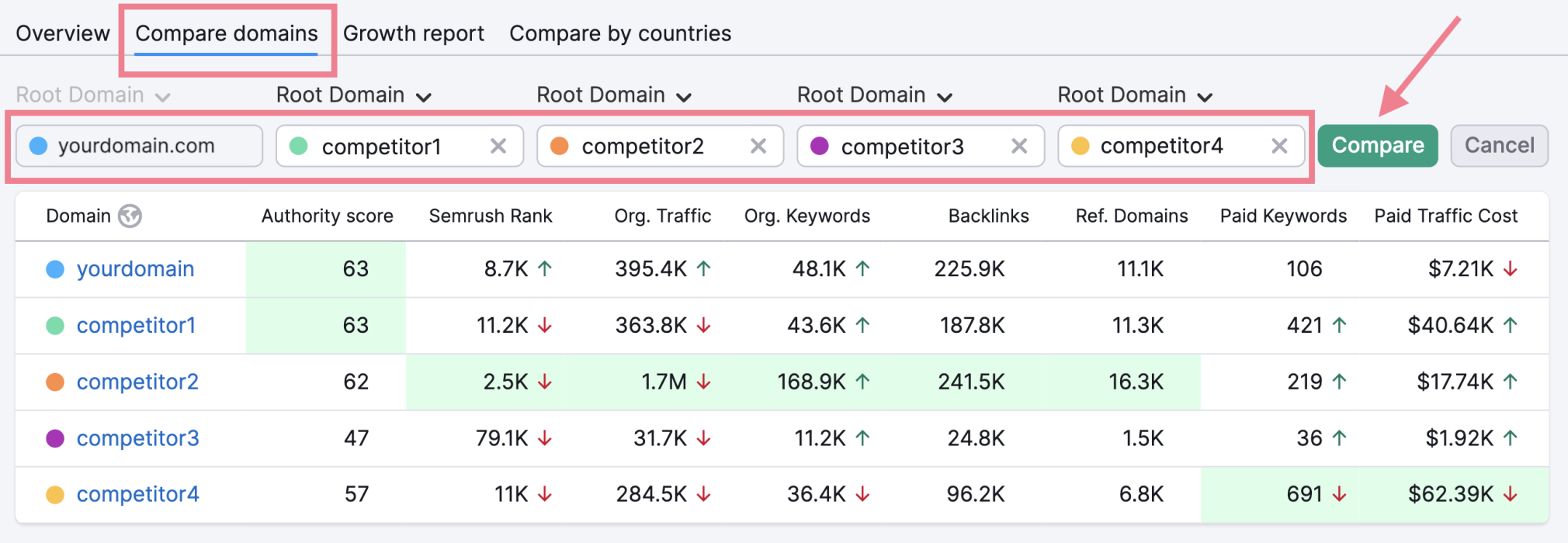
If you scroll down, you’ll see a monthly traffic trend graph. You can toggle between “Organic” and “Paid” to see if any competitors are driving traffic via PPC (pay-per-click).
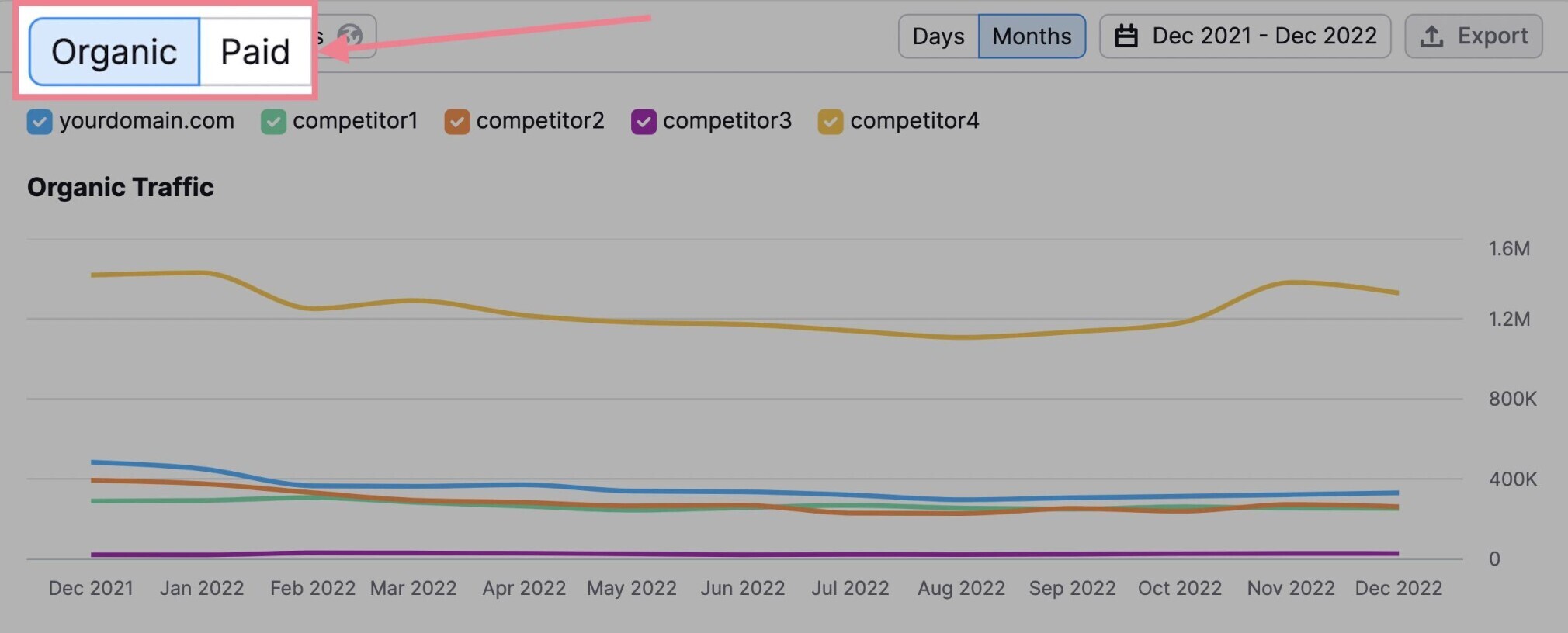
Scroll down further, and you’ll see two boxes:
“Top Opportunities” with keywords you should create content around.
And “Keyword Overlap” to see the keyword intersect among your competitors.
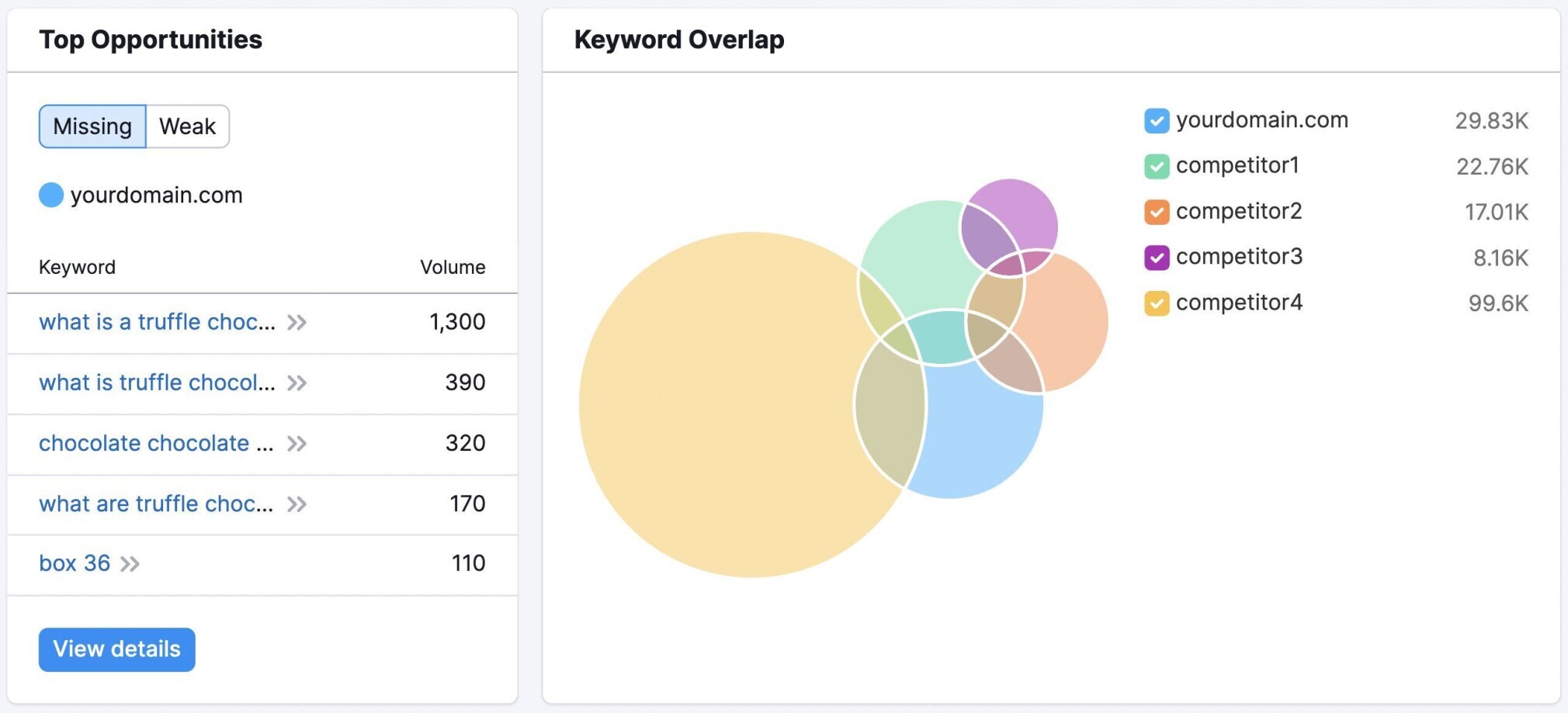
This exercise shows the connection between organic traffic and content in your industry.
As for traffic potential, use our Traffic Analytics tool. Add your top four competitors.
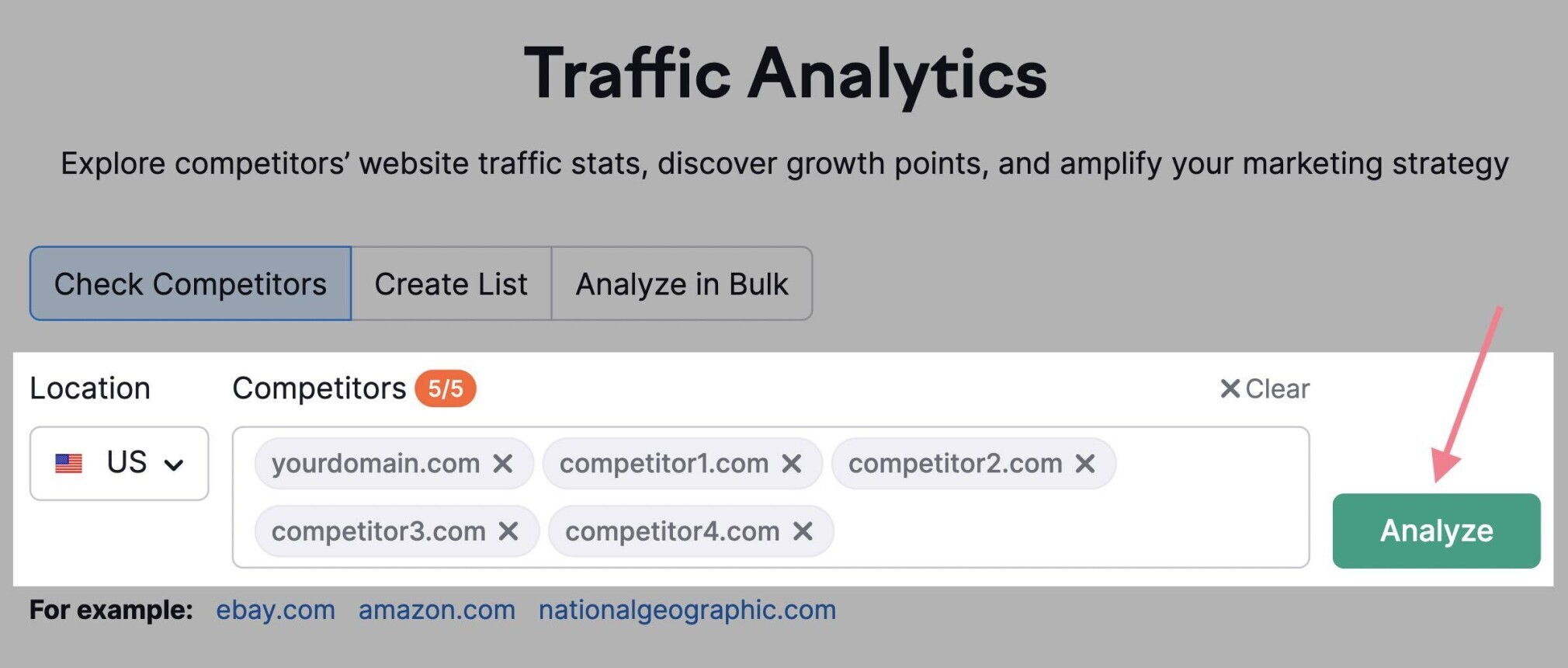
You’ll see the overall trend of visits, pages per visit, visit duration, bounce rate, and more.
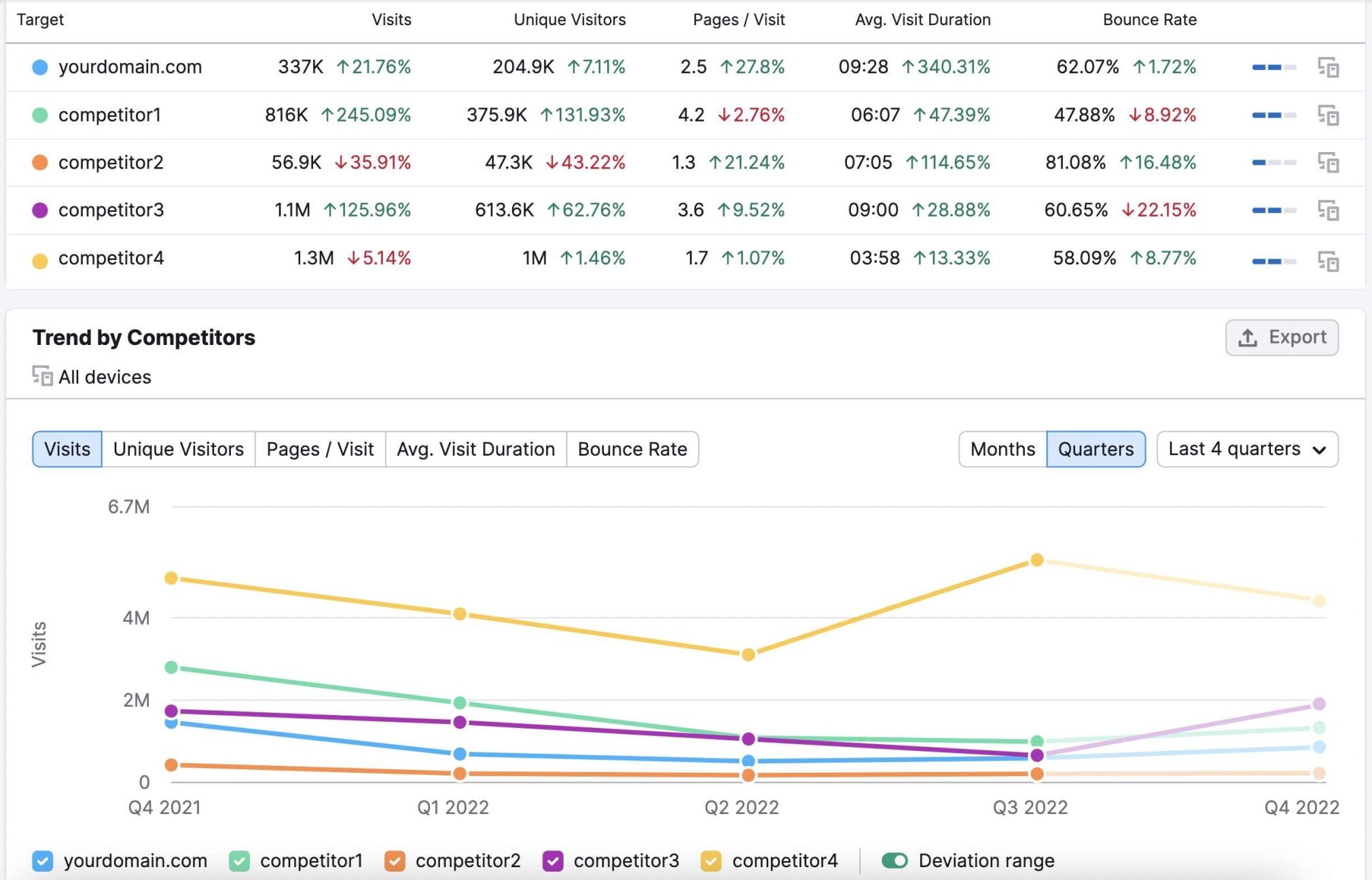
Take note of how overall traffic performance changes per quarter.
You can also go to the “Top Pages” tab to see which pages get the most traffic. Then, click on “Show Insights” to find pages with growing and declining traffic.
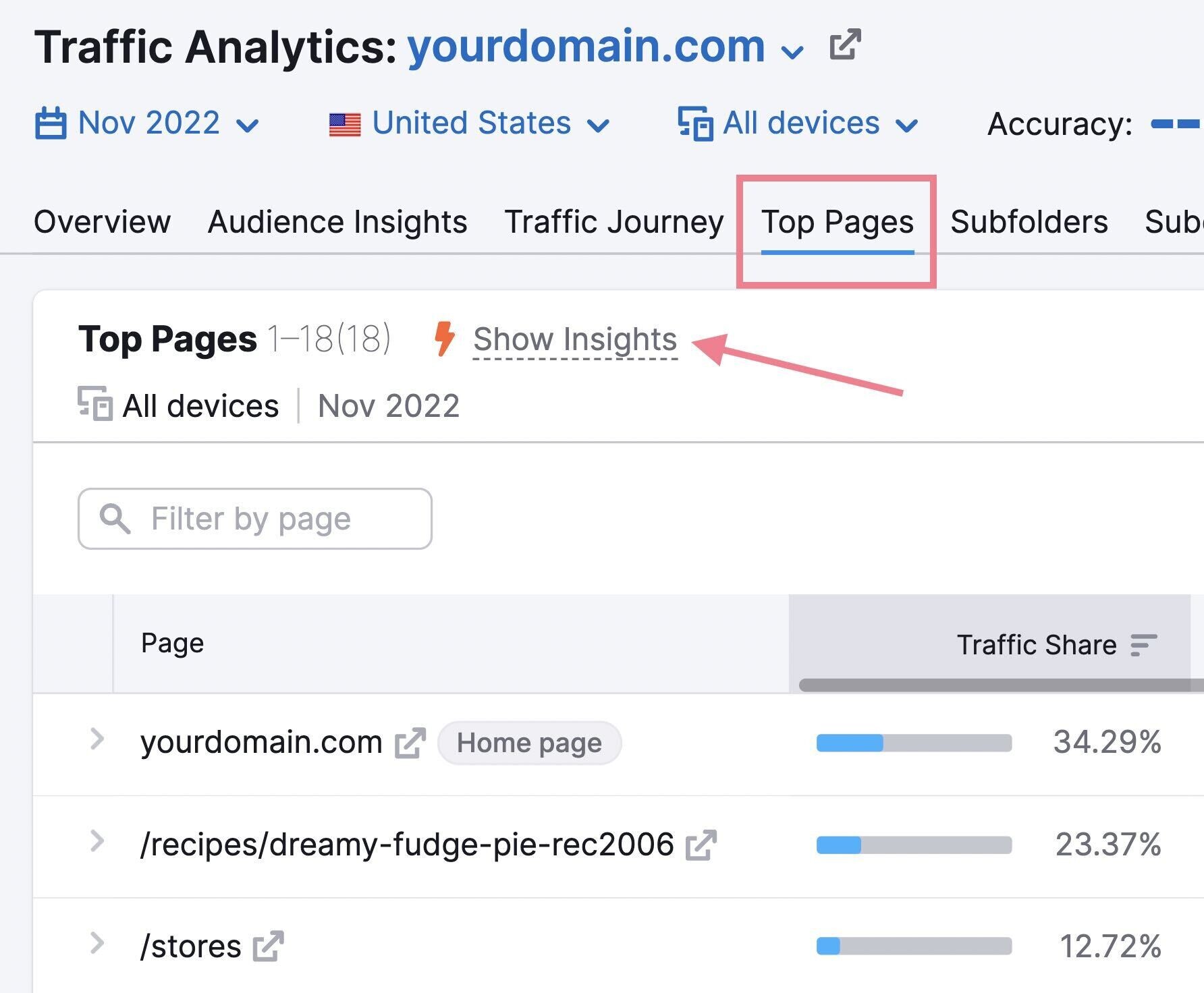
Again, observe any seasonal changes. (Per quarter.)
See how your site’s organic traffic performs compared to others. And look for trends that can help you forecast.
Finally, consider your average conversion rate. You should have already calculated this if you’ve measured your SEO ROI.
Create hypotheses based on all the data you gathered. Think about which SEO activities can create which outcomes and result in how many conversions (and how much revenue).
Measure Your SEO Progress with Semrush
Knowing the ROI of your SEO is a powerful way to prove your efforts are working. And you can use it to get buy-in for additional investment in your SEO strategy.
Think about it—if you can prove a stable ROI on SEO, it’ll likely be easier to ask for further investments in talent, new tools, and more.
And if your SEO ROI isn’t where you want it to be just yet, you can use Semrush to help get you there.
Measure your current SEO performance, research competitors, and find optimization ideas all in one place.
